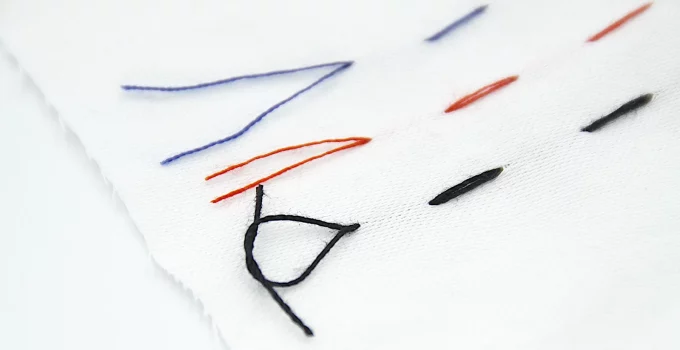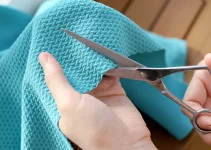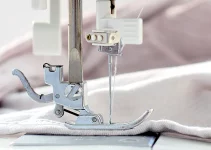We could say that the basics of hand sewing are focused on two main things: sewing a straight stitch and learning how to tie off a stitch.
It’s also called tying a finishing knot.
I will say that learning to sew straight by hand is a lot more complicated than learning how to tie off a stitch in no time.
I’m going to assume that you already know how to thread a needle.
Also, check out my recommendations for the best sewing books if you are interested in learning so much more about hand sewing as well as machine sewing.
How To Tie Off A Stitch Easily and Successfully
Now, let’s see if I can manage to put into words my quick guide on tying a finishing knot.
It’s an essential part of the process. If we don’t tie a finishing knot, the durability of our carefully done stitching is in danger.
If you decide to switch from hand sewing to machine sewing, check out my reviews for the best thread for sewing machine if you are interested to know which spools you should use both your bottom and top threads.
If we’re sewing with a double threaded needle
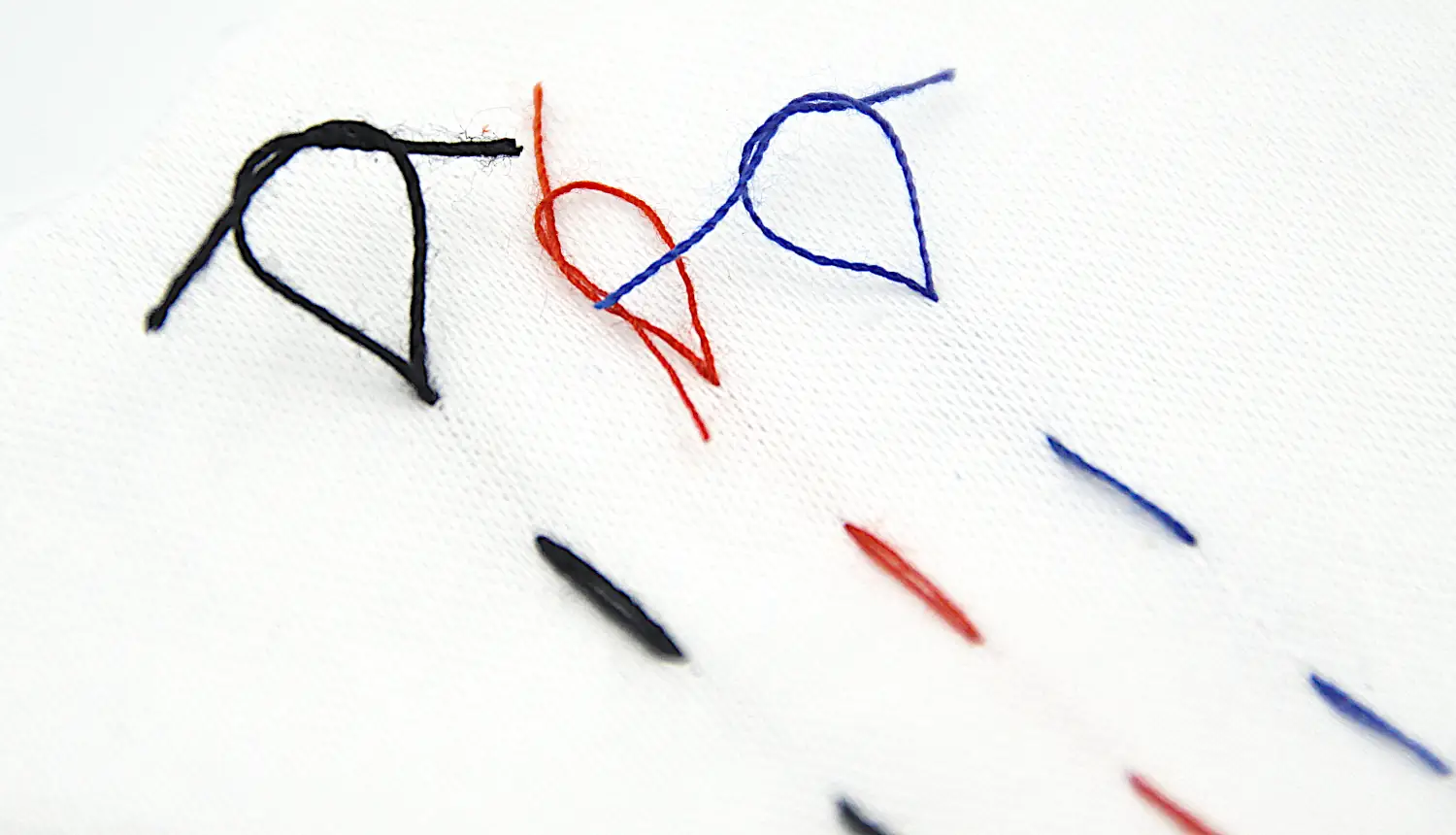 In this case, things are extremely simple.
In this case, things are extremely simple.
Since we have two threads, once we cut off the thread right below the needle, all we need to do is to tie the two halves together.
If you have a tail of 2-3 inches, it’s going to be enough to tie the two threads together.
You can do 2 or 3 knots. Doing just one knot is not durable enough because this is the one that needs to be tied a bit more loosely if we want a completely straight fabric.
When you’re doing the first knot, tie the two threads right down to the fabric. Don’t tighten them too much because that might pull on the stitches that you sew, which makes the fabric pucker.
After the first knot, you can tie them more tightly.
Doing 3 knots is my recommendation.
Some people might choose to sew with a double threaded needle because it’s easier to tie a finishing knot.
If we’re sewing with a single threaded needle
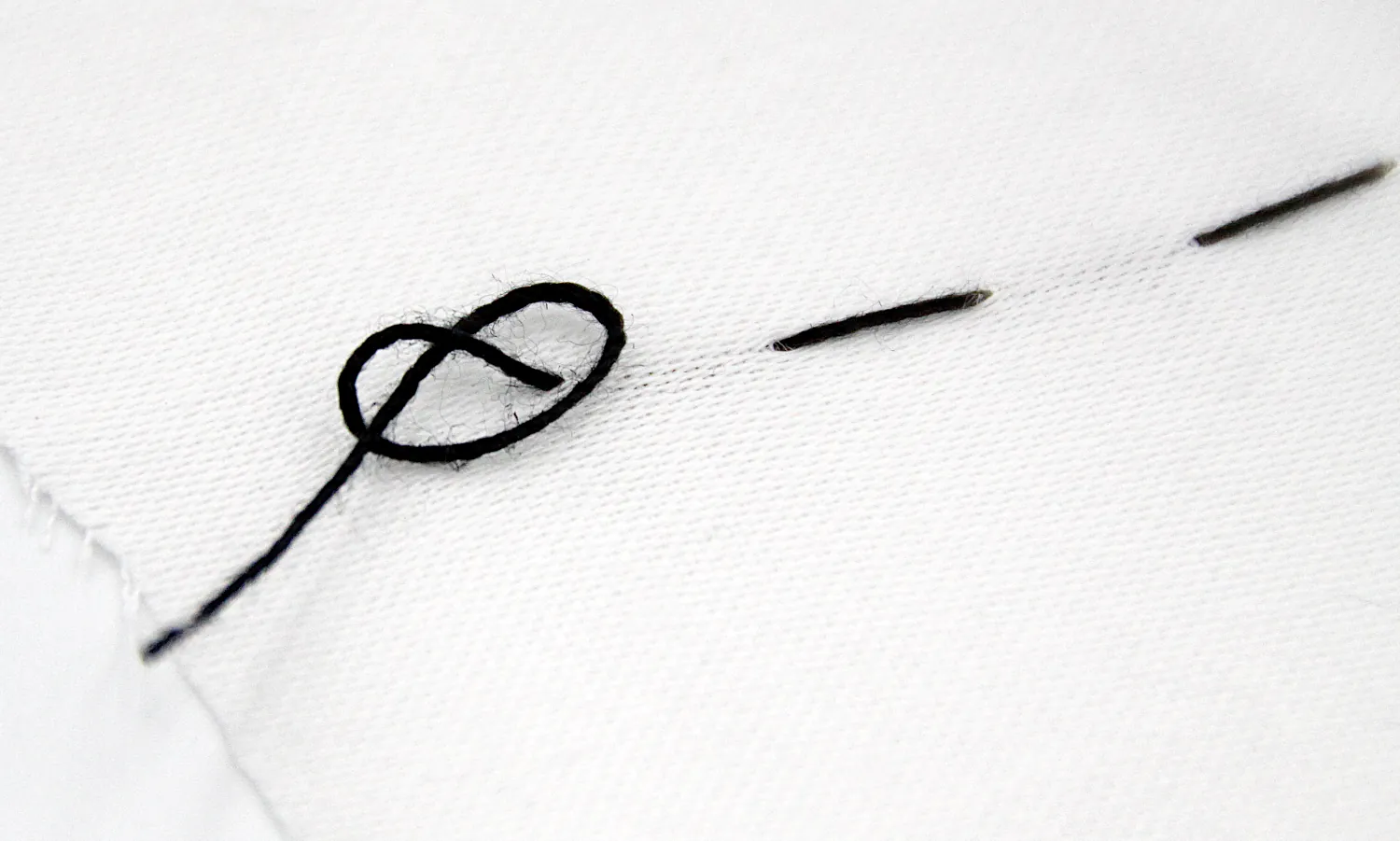
This is a bit more complicated but you’ll still be able to learn how to tie off a stitch in a few seconds.
It’s also my favorite method to secure a stitch. This is the method I use most of the time.
By the way, if you are the kind of person who learns better visually, there are plenty of YouTube tutorials you can watch, like this one.
1. Turn to the back of the fabric
2. Place the needle under your last stitch and pull the thread until you get a loop – you don’t pull the thread until you form a knot, you absolutely need a loop that has the circumference of our little finger or something similar
3. Pas the needle through the loop – now we can pull the thread and tighten it until we get a knot, still don’t be too forceful to not tighten the other stitches, too so let your first knot be loose
4. We can pass the needle underneath our first knot and make a second loop
5. Pass the needle again through the second loop in order to make a second knot
6. With a second knot in place, we can cut the thread very closely to the second knot and that’s it
How to pick hand needles
The easiest way to buy a bunch of hand needles is to buy a variety pack. It contains all the needles you need for the most basic hand-sewing projects.
Variety packs will vary in size, they might contain 5 to 10 needles of various lengths and thickness. Sewing machine needles also vary the same way.
Some hand needles will also have different-sized eyes. The eye is the part through which the thread goes through.
A tiny need with a tiny eye is a bit more frustrating to thread but it helps if you have very good lighting illuminating your sewing space.
There are also self-threading hand needles that have two eyes. Just as we have machines with an automatic needle threader.
Self-threading hand needles have a top eye that has an open notch in it with a one-way hook. The notch allows us to snap the thread into the eye from the top. The hook prevents the thread from coming out.
The second eye is used like a conventional needle.
If the self-threading feature breaks we can use the second eye as the backup plan.
Also, I highly recommend using thimbles to protect your precious fingers if you do a lot of hand sewing.
All in all, learning how to tie off a stitch is quite easy, whether you’re sewing with a single thread or a double thread.

